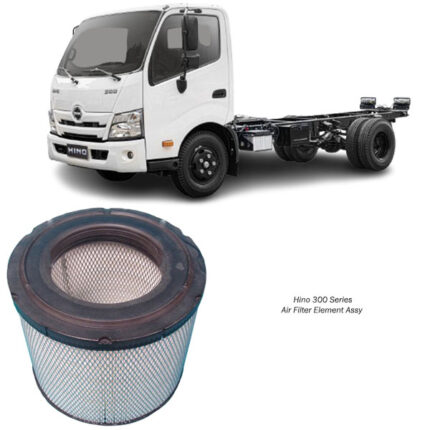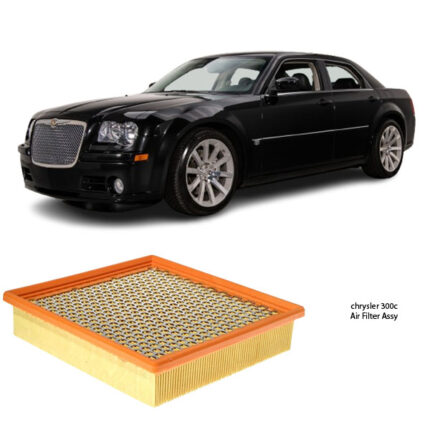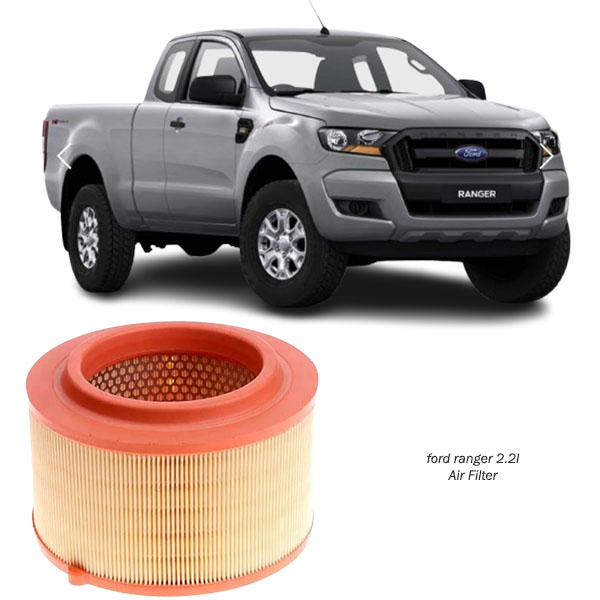-17%
Get Ford Ranger 2.2L Air Filter Element Sub Assy AB399601AB in Kenya
The Air Filter Element Sub-Assembly is a critical component of a vehicle’s air intake system, designed to ensure clean air is supplied to the engine for efficient combustion. This component not only safeguards the engine from harmful contaminants but also contributes to optimal fuel efficiency and vehicle performance.
This guide will explore the structure, functions, benefits, maintenance tips, and signs of failure related to the Air Filter Element Sub-Assy, making it easier to understand its significance and proper upkeep.
1. What is an Air Filter Element Sub-Assy?
The Air Filter Element Sub-Assy is a part of the intake system that houses the air filter. It consists of the following components:
- Filter Element: Made of pleated paper, foam, or cotton material to trap contaminants while allowing clean air to pass through.
- Filter Frame: Provides structural support to the filter element.
- Housing: The assembly encases the filter and ensures it fits snugly within the intake manifold or airbox.
This unit ensures that only clean air reaches the combustion chambers, where it mixes with fuel to generate power.
2. How Does the Air Filter Element Sub-Assy Work?
- Air Intake:
Air enters the intake system through the vehicle’s grille or intake ducts. - Filtration:
The air filter traps dirt, debris, and other particles, preventing them from entering the engine. - Air Supply to Engine:
Clean, filtered air is directed to the combustion chamber, where it combines with fuel for efficient combustion. - Emission Control:
By ensuring proper filtration, the air filter helps reduce unburned particles and harmful emissions.
3. Functions of the Air Filter Element Sub-Assy
- Prevents Engine Damage: Captures harmful contaminants that could otherwise scratch, corrode, or clog sensitive engine components.
- Improves Combustion Efficiency: Maintains the correct air-fuel ratio by allowing only clean air to enter the engine.
- Enhances Fuel Economy: Reduces fuel wastage by ensuring complete combustion.
- Reduces Emissions: Supports cleaner combustion, lowering the release of harmful gases into the environment.
- Prolongs Engine Life: Protects internal components, minimizing wear and tear caused by abrasive particles.
4. Types of Air Filter Element Sub-Assy
- Paper Filters:
- Most common type, designed for efficient filtration at a low cost.
- Disposable and easy to replace.
- Foam Filters:
- Made for heavy-duty or off-road applications.
- Reusable after cleaning with oil and water.
- Cotton Gauze Filters:
- High-performance filters often used in sports or luxury vehicles.
- Reusable and washable.
- Synthetic Filters:
- Long-lasting filters made of synthetic fiber, designed for extreme conditions.
- Oil-Bathed Filters:
- Old-fashioned filters that use oil to capture debris, common in older models and agricultural equipment.
5. Benefits of a High-Quality Air Filter Element Sub-Assy
- Optimal Engine Performance: Clean air enables the engine to perform at its best, ensuring smooth acceleration and power delivery.
- Reduced Maintenance Costs: Protecting the engine from debris reduces the likelihood of costly repairs.
- Improved Fuel Efficiency: Clean air filters ensure that the engine doesn’t overwork to pull air, conserving fuel.
- Lower Emissions: By enabling complete combustion, the filter reduces the emission of unburned hydrocarbons and particulates.
- Enhanced Vehicle Longevity: Ensures engine components are well-protected, extending the overall lifespan of the vehicle.
6. Maintenance and Care Tips
- Inspection Frequency:
- Check the air filter every 10,000 to 15,000 kilometers or as recommended by the manufacturer.
- Cleaning Reusable Filters:
- Wash foam or cotton filters with water and cleaning solutions and re-oil them before reinstallation.
- Timely Replacement:
- Replace paper filters once they become dirty or clogged.
- Use Genuine Parts:
- Always use high-quality or OEM-recommended filters for optimal performance.
- Check the Housing:
- Ensure the air filter housing is free of cracks or gaps that could allow unfiltered air to enter.
- Replace in Dusty Conditions:
- Vehicles operated in dusty or off-road conditions may require more frequent filter replacement.
7. Signs of a Failing Air Filter Element Sub-Assy
- Reduced Engine Performance:
- A dirty or clogged filter restricts airflow, causing sluggish acceleration or power loss.
- Increased Fuel Consumption:
- Insufficient air supply forces the engine to consume more fuel to maintain performance.
- Black Smoke from Exhaust:
- Indicates incomplete combustion due to restricted airflow.
- Engine Misfires or Hesitation:
- A clogged filter can lead to improper air-fuel ratios, causing the engine to misfire.
- Unusual Noises:
- Whistling or hissing sounds from the intake system may point to a damaged or improperly installed filter.
- Check Engine Light:
- Restricted airflow can trigger a fault code, causing the check engine light to illuminate.
8. Replacement Process
- Locate the Air Filter Housing:
- Typically found in the engine bay near the intake manifold.
- Open the Housing:
- Release the clips, screws, or fasteners holding the housing in place.
- Remove the Old Filter:
- Carefully take out the filter, ensuring no debris falls into the housing.
- Inspect and Clean:
- Wipe out dust or debris from the housing with a clean, dry cloth.
- Insert the New Filter:
- Place the new filter in the correct orientation.
- Reassemble the Housing:
- Secure the housing and check for a proper seal to avoid air bypass.
9. Choosing the Right Air Filter Element Sub-Assy
- Check Compatibility: Ensure the filter matches your vehicle’s make, model, and engine specifications.
- Material Quality: Select filters made from durable and efficient materials.
- Manufacturer Recommendations: Use OEM parts or trusted aftermarket brands for reliable performance.
- Driving Conditions: Consider reusable filters for off-road or dusty environments.
10. Environmental Considerations
Used air filters are often made of non-recyclable materials and must be disposed of responsibly. To reduce environmental impact:
- Opt for washable and reusable filters.
- Dispose of old filters at certified recycling facilities or service centers.
11. Frequently Asked Questions
Q: How often should I replace my air filter?
A: Most air filters should be replaced every 15,000 to 20,000 kilometers, but this depends on driving conditions and manufacturer guidelines.
Q: Can I drive with a dirty air filter?
A: While possible, a dirty filter restricts airflow, leading to reduced performance, poor fuel efficiency, and increased engine wear.
Q: What happens if I install the filter incorrectly?
A: Incorrect installation can result in unfiltered air bypassing the filter, causing potential engine damage.
Conclusion
The Air Filter Element Sub-Assy is a crucial part of a vehicle’s intake system, ensuring clean and efficient airflow to the engine. By trapping contaminants, it not only safeguards the engine but also improves performance, fuel efficiency, and longevity. Regular inspection, timely replacement, and choosing the right filter are essential to keeping your vehicle running smoothly and efficiently.
Invest in a high-quality air filter element sub-assy to maintain peak performance and protect your engine for the long haul.
Follow us on Facebook for more parts.



